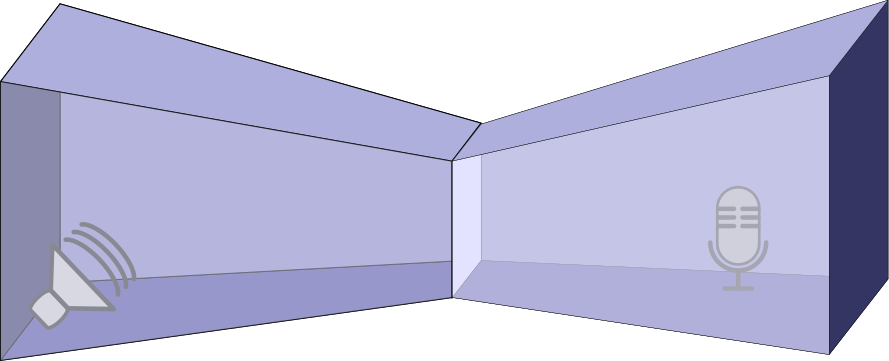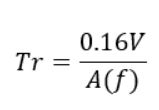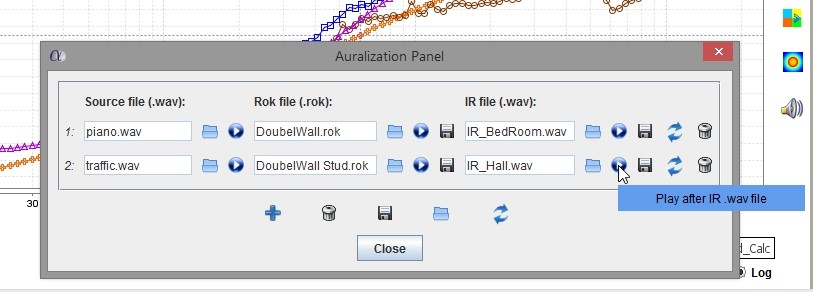Improving Acoustics at an Early Stage of the Trim Development by Making Changes Audible

This guest contribution on Innovation Intelligence is written by François-Xavier Bécot, Co-Manager & Researcher at MATELYS Research Lab. AlphaCell software by MATELYS is a complete and accurate TMM/FTMM solution used to simulate the vibro-acoustic response of multi-layer trims under various excitations (airborne, structure borne, turbulent boundary layer). AlphaCell is available through the Altair Partner Alliance.
Introduction
Quality acoustics in any given space are beneficial to all users, be they temporary or resident. This helps in securing the communication between the users of the room and is generally associated with a gain in productivity. To the contrary, a poor acoustic environment not only causes mid or long term hearing issues but also decreases the workers' efficiency and reinforces the risk of cardio-vascular troubles.
The software product AlphaCell, available within the APA, is a fast and accurate solution to design efficient solutions for noise and vibrations mitigations. The new auralization feature of AlphaCell reinforces this expertise by providing the ability to listen to the solution efficiency at an early stage of the product development.
Correction or Insulation?
In NVH, if the source and the receiver are located in the same room, this would be a case of acoustic correction. This situation is mainly assessed using the sound absorption coefficient. If the source and receiver are in two different rooms separated by a wall, this would be a case of acoustic insulation. In this case, the performance is mainly assessed using the sound transmission loss property of the wall.
Aren’t these two situations somewhat connected? The answer is yes since the perceived sound at the receiver’s ear will also depend on the amount of sound absorption in the room where the receiver is located. In other words, with similar wall properties, an increased sound absorption in the receiver’s room will provide a decrease in the sound level resulting in the perception of increased comfort by the receiver.
This is a rather intuitive example, however, how do you make simulations of sound absorption and sound transmission render these different situations? AlphaCell’s new auralization features can help answer this question.
 Impulse responses are often used to assess the acoustic characteristics of a given room. It is measured using an inflated balloon which is popped and the decaying sound pressure level is recorded as the sound from the balloon fades away. This is why acousticians often clap their hands while entering a room, they are not applauding the room’s acoustic quality (at least not yet) but rather they are trying to estimate how much an impulse sound echoes in the room.
Impulse responses are often used to assess the acoustic characteristics of a given room. It is measured using an inflated balloon which is popped and the decaying sound pressure level is recorded as the sound from the balloon fades away. This is why acousticians often clap their hands while entering a room, they are not applauding the room’s acoustic quality (at least not yet) but rather they are trying to estimate how much an impulse sound echoes in the room.
Impulse Response & Reverberation Times
The reverberation times may be evaluated based on the sound decay. This is measured as the amount of time needed for the sound pressure to decrease by 60 dB. In practice, it may be difficult to measure a 60 dB decay due to persistent background noise. With a background noise of 50 dB which is representative of a quiet office ambience, a noise should be sent out above a 110 dB noise level, namely, equal to a typical aircraft engine noise from a few meters away. Therefore, a 20 or 30 dB sound level decay is typically recorded and the 60 dB decay value is extrapolated assuming that the sound decay is linear.
Sabine Theory
Reverberation times may be linked to the amount of sound absorption in the room using the Sabine Theory:

where is the volume of the room and is the equivalent absorption area defined as the product of the sound absorption coefficient (the material capacity to dissipate sound energy) and the surface area (the amount of material within a given volume): . If several materials are present in the same volume, the sum of each absorption must be appraised.
The example below shows that the resulting absorption quantity is dependent on the treated surface area. Here, the largest absorption is obtained from the materials of the seat. However, the main contributor to the absorption in the vehicle cabin is the headliner because of its large surface. Therefore, modifications on the headliner and carpet materials will have the largest impact on the reverberation time.

Listening Tool: Another Point of View
The graphs above show that the resulting overall absorption is increased around 1500 Hz due to the carpet’s behavior. To evaluate whether this is likely to be perceived by the vehicle passengers, AlphaCell allows the user to listen to the impulse response as modified by the presence of the materials in the vehicle cabin. The user can then judge if the impacted frequency range corresponds to the one which is heard. Measured impulse responses can be imported as a WAV file and users can listen to it before and after the modification of the cabin treatment.
The same can be done for a sound insulation configuration. The following audio file contains three samples. The first is the original sound and the others are the original sound attenuated by two different sound packages.
[audio wav="/videos/default-source/news-videos/roadwork.wav"][/audio]
[audio wav="/videos/default-source/news-videos/roadwork_afterTLHL.wav"][/audio]
[audio wav="/videos/default-source/news-videos/roadwork_afterTLScreen.wav"][/audio]
Did you hear the difference? The fist modified sound contains less high pitch sound than the second one due to different attenuation spectra of the two sound packages. Both sound packages are made of a felt bonded to the metal sheet. In the first sound package the felt is topped with a heavy layer and in the second it is topped with a highly porous screen with little acoustical effect. The resulting attenuation performances of these two sound packages are plotted in the figure below (the higher the curve, the more the sound is attenuated). It is clear that the sound package containing the heavy layer eliminates much more high frequency content from the original sound.
 In AlphaCell, the user can even directly import an actual sound such as an engine humming or rainfall. The sound transmission loss of the separating wall may be computed; for the former sound, it is likely to be the firewall, for the latter, the headliner would be considered. Note that both noise excitations can be conveniently represented with AlphaCell (see also the Panel Assembly feature to account for several material thicknesses and holes). In this listening test procedure, the computed sound transmission value will be viewed as a frequency filter acting on each frequency component of the input sound. As a result, the user may listen to the filtered sound as if it were radiating in free space without any obstacles. In addition, the characteristics of the listening room may further be accounted for using the room impulse response. In this case, the user may evaluate the additional impact of the sound absorbing material of the receiving room.
In AlphaCell, the user can even directly import an actual sound such as an engine humming or rainfall. The sound transmission loss of the separating wall may be computed; for the former sound, it is likely to be the firewall, for the latter, the headliner would be considered. Note that both noise excitations can be conveniently represented with AlphaCell (see also the Panel Assembly feature to account for several material thicknesses and holes). In this listening test procedure, the computed sound transmission value will be viewed as a frequency filter acting on each frequency component of the input sound. As a result, the user may listen to the filtered sound as if it were radiating in free space without any obstacles. In addition, the characteristics of the listening room may further be accounted for using the room impulse response. In this case, the user may evaluate the additional impact of the sound absorbing material of the receiving room.

Meet Matelys at EATC 2017, June 26-28, 2017 in Frankenthal, Germany.
Introduction
Quality acoustics in any given space are beneficial to all users, be they temporary or resident. This helps in securing the communication between the users of the room and is generally associated with a gain in productivity. To the contrary, a poor acoustic environment not only causes mid or long term hearing issues but also decreases the workers' efficiency and reinforces the risk of cardio-vascular troubles.
The software product AlphaCell, available within the APA, is a fast and accurate solution to design efficient solutions for noise and vibrations mitigations. The new auralization feature of AlphaCell reinforces this expertise by providing the ability to listen to the solution efficiency at an early stage of the product development.
Correction or Insulation?
In NVH, if the source and the receiver are located in the same room, this would be a case of acoustic correction. This situation is mainly assessed using the sound absorption coefficient. If the source and receiver are in two different rooms separated by a wall, this would be a case of acoustic insulation. In this case, the performance is mainly assessed using the sound transmission loss property of the wall.
Aren’t these two situations somewhat connected? The answer is yes since the perceived sound at the receiver’s ear will also depend on the amount of sound absorption in the room where the receiver is located. In other words, with similar wall properties, an increased sound absorption in the receiver’s room will provide a decrease in the sound level resulting in the perception of increased comfort by the receiver.
This is a rather intuitive example, however, how do you make simulations of sound absorption and sound transmission render these different situations? AlphaCell’s new auralization features can help answer this question.
 Impulse responses are often used to assess the acoustic characteristics of a given room. It is measured using an inflated balloon which is popped and the decaying sound pressure level is recorded as the sound from the balloon fades away. This is why acousticians often clap their hands while entering a room, they are not applauding the room’s acoustic quality (at least not yet) but rather they are trying to estimate how much an impulse sound echoes in the room.
Impulse responses are often used to assess the acoustic characteristics of a given room. It is measured using an inflated balloon which is popped and the decaying sound pressure level is recorded as the sound from the balloon fades away. This is why acousticians often clap their hands while entering a room, they are not applauding the room’s acoustic quality (at least not yet) but rather they are trying to estimate how much an impulse sound echoes in the room.Impulse Response & Reverberation Times
The reverberation times may be evaluated based on the sound decay. This is measured as the amount of time needed for the sound pressure to decrease by 60 dB. In practice, it may be difficult to measure a 60 dB decay due to persistent background noise. With a background noise of 50 dB which is representative of a quiet office ambience, a noise should be sent out above a 110 dB noise level, namely, equal to a typical aircraft engine noise from a few meters away. Therefore, a 20 or 30 dB sound level decay is typically recorded and the 60 dB decay value is extrapolated assuming that the sound decay is linear.
Sabine Theory
Reverberation times may be linked to the amount of sound absorption in the room using the Sabine Theory:

where is the volume of the room and is the equivalent absorption area defined as the product of the sound absorption coefficient (the material capacity to dissipate sound energy) and the surface area (the amount of material within a given volume): . If several materials are present in the same volume, the sum of each absorption must be appraised.
The example below shows that the resulting absorption quantity is dependent on the treated surface area. Here, the largest absorption is obtained from the materials of the seat. However, the main contributor to the absorption in the vehicle cabin is the headliner because of its large surface. Therefore, modifications on the headliner and carpet materials will have the largest impact on the reverberation time.

Listening Tool: Another Point of View
The graphs above show that the resulting overall absorption is increased around 1500 Hz due to the carpet’s behavior. To evaluate whether this is likely to be perceived by the vehicle passengers, AlphaCell allows the user to listen to the impulse response as modified by the presence of the materials in the vehicle cabin. The user can then judge if the impacted frequency range corresponds to the one which is heard. Measured impulse responses can be imported as a WAV file and users can listen to it before and after the modification of the cabin treatment.
The same can be done for a sound insulation configuration. The following audio file contains three samples. The first is the original sound and the others are the original sound attenuated by two different sound packages.
[audio wav="/videos/default-source/news-videos/roadwork.wav"][/audio]
[audio wav="/videos/default-source/news-videos/roadwork_afterTLHL.wav"][/audio]
[audio wav="/videos/default-source/news-videos/roadwork_afterTLScreen.wav"][/audio]
Did you hear the difference? The fist modified sound contains less high pitch sound than the second one due to different attenuation spectra of the two sound packages. Both sound packages are made of a felt bonded to the metal sheet. In the first sound package the felt is topped with a heavy layer and in the second it is topped with a highly porous screen with little acoustical effect. The resulting attenuation performances of these two sound packages are plotted in the figure below (the higher the curve, the more the sound is attenuated). It is clear that the sound package containing the heavy layer eliminates much more high frequency content from the original sound.
 In AlphaCell, the user can even directly import an actual sound such as an engine humming or rainfall. The sound transmission loss of the separating wall may be computed; for the former sound, it is likely to be the firewall, for the latter, the headliner would be considered. Note that both noise excitations can be conveniently represented with AlphaCell (see also the Panel Assembly feature to account for several material thicknesses and holes). In this listening test procedure, the computed sound transmission value will be viewed as a frequency filter acting on each frequency component of the input sound. As a result, the user may listen to the filtered sound as if it were radiating in free space without any obstacles. In addition, the characteristics of the listening room may further be accounted for using the room impulse response. In this case, the user may evaluate the additional impact of the sound absorbing material of the receiving room.
In AlphaCell, the user can even directly import an actual sound such as an engine humming or rainfall. The sound transmission loss of the separating wall may be computed; for the former sound, it is likely to be the firewall, for the latter, the headliner would be considered. Note that both noise excitations can be conveniently represented with AlphaCell (see also the Panel Assembly feature to account for several material thicknesses and holes). In this listening test procedure, the computed sound transmission value will be viewed as a frequency filter acting on each frequency component of the input sound. As a result, the user may listen to the filtered sound as if it were radiating in free space without any obstacles. In addition, the characteristics of the listening room may further be accounted for using the room impulse response. In this case, the user may evaluate the additional impact of the sound absorbing material of the receiving room.
Auralization panel suited for quick pair comparisons
Contact MATELYS to learn more about the modeling and listening capabilities of AlphaCell: [email protected]Meet Matelys at EATC 2017, June 26-28, 2017 in Frankenthal, Germany.




